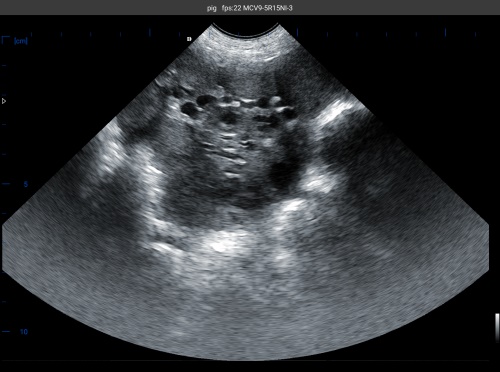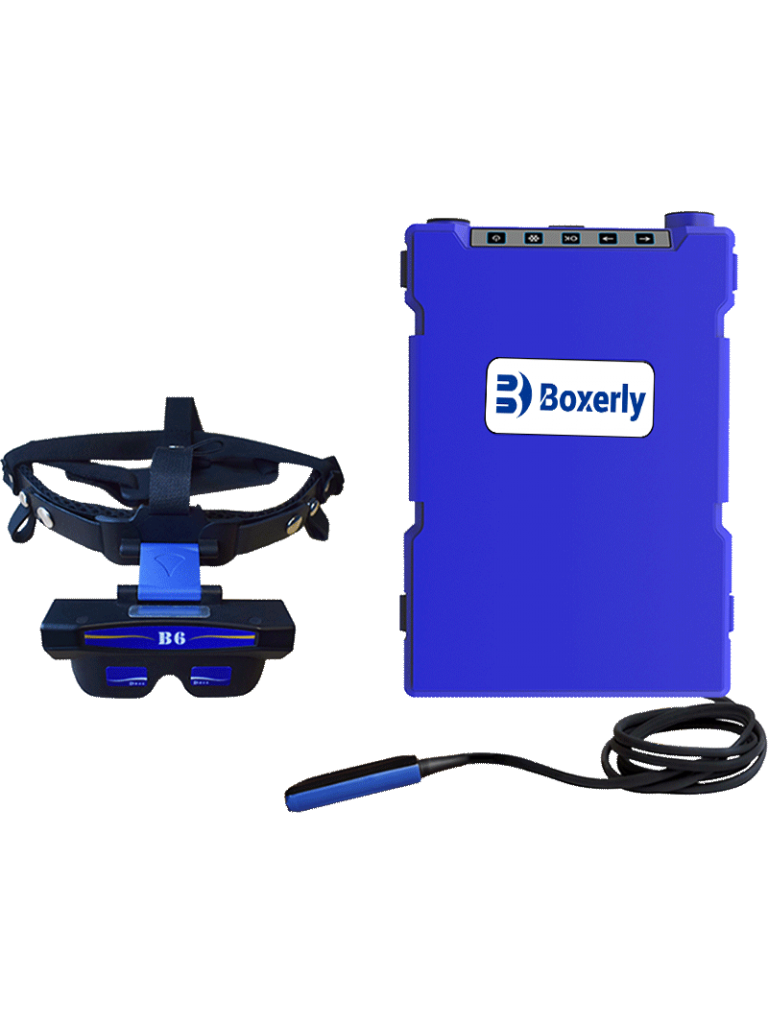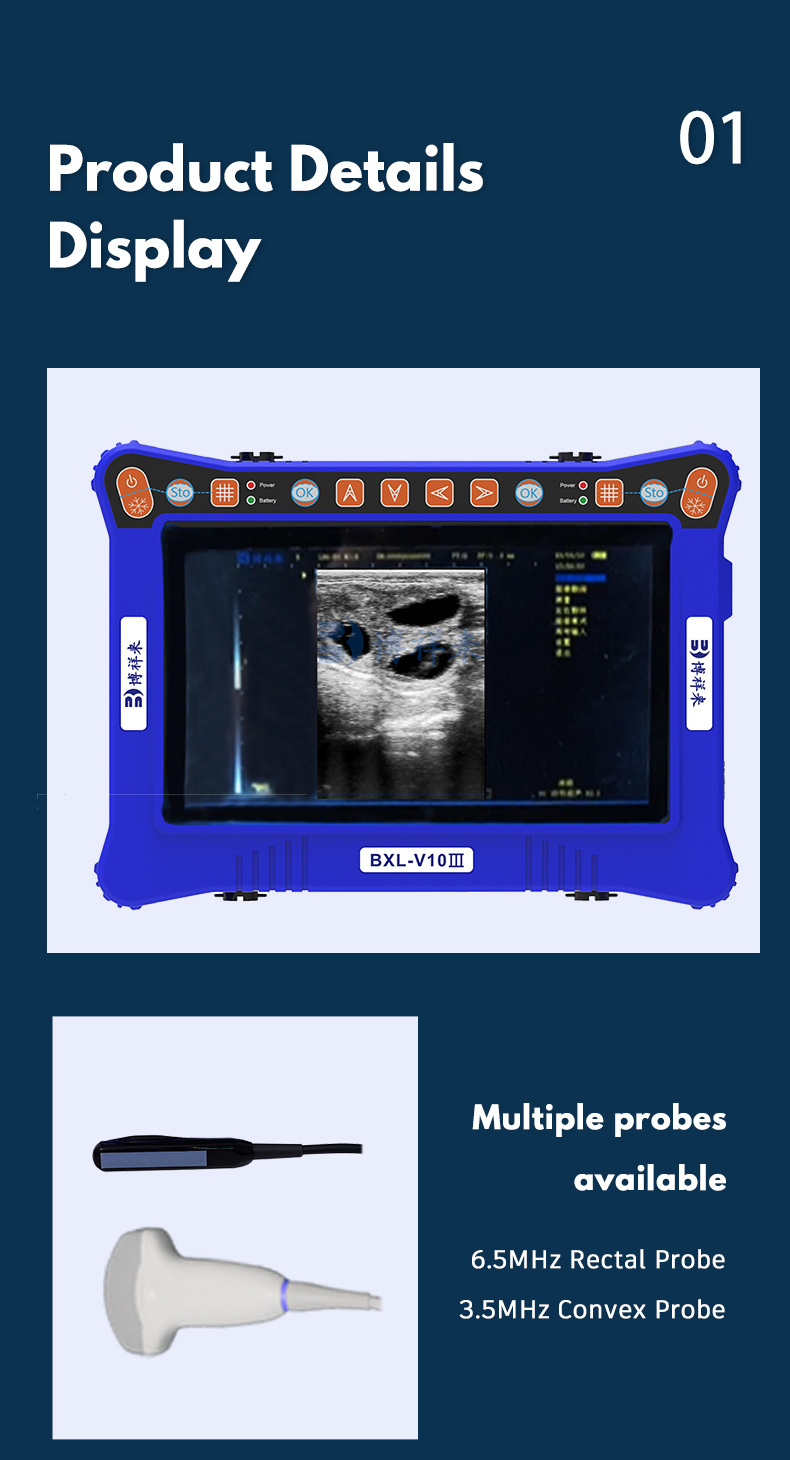Impact of Portable Ultrasound Technology on Monitoring Swine Reproductive Disorders in Commercial Farms
In commercial swine production, reproductive efficiency is a cornerstone of profitability. The ability to monitor reproductive health accurately and promptly allows producers to manage breeding, detect disorders early, and improve overall productivity. Portable ultrasound technology has emerged as a game-changing tool in this regard. Unlike traditional laboratory or fixed ultrasound systems, portable ultrasound devices offer convenience, real-time imaging, and the flexibility to be used directly on farms with minimal disturbance to the animals.

This article explores the impact of portable ultrasound technology on monitoring reproductive disorders in commercial swine farms. Drawing upon research and practices from various countries, it highlights how this technology has improved reproductive management, reduced economic losses, and enhanced animal welfare in the global swine industry.
Understanding Reproductive Disorders in Swine
Reproductive disorders in swine encompass a wide range of issues affecting the sow’s ability to conceive, maintain pregnancy, and farrow healthy piglets. Common disorders include:
-
Anestrus (lack of estrus cycles)
-
Delayed or failed ovulation
-
Uterine infections such as endometritis and metritis
-
Embryonic loss and abortion
-
Fetal mummification or stillbirths
-
Ovarian cysts or follicular abnormalities
Such problems can drastically reduce farrowing rates, litter size, and piglet viability, directly impacting farm profitability. Traditionally, reproductive status was evaluated using behavioral observation, manual palpation, or hormone assays, but these methods have limitations in accuracy and timeliness.
The Role of Portable Ultrasound in Swine Reproduction
Advantages of Portable Ultrasound Technology
Portable ultrasound devices offer several benefits over conventional methods:
-
Non-invasive and Stress-free: Ultrasound scanning is painless and minimally stressful for sows, allowing repeated monitoring without affecting animal well-being.
-
Real-Time Visualization: B-mode ultrasound imaging provides instant visual feedback on ovarian and uterine structures, enabling precise diagnosis.
-
Early Detection: Ultrasound can identify pregnancy as early as 18-22 days post-breeding, detect embryonic losses, and reveal uterine or ovarian abnormalities before clinical signs appear.
-
Portability and Flexibility: Lightweight and battery-operated, these devices can be used in barns, gestation rooms, or farrowing houses, facilitating on-site examinations.
-
Cost-Effectiveness: Early and accurate diagnosis reduces veterinary costs, improves breeding efficiency, and minimizes economic losses.
Technical Aspects and Key Parameters
Modern portable ultrasound machines, such as the BXL-V50, come equipped with high-resolution screens, waterproof designs, and multiple probe options tailored for swine reproductive scanning. The typical parameters evaluated during swine ultrasound examinations include:
-
Follicle Size and Number: Follicles on the ovaries can be measured to assess estrus readiness and ovulation timing.
-
Corpus Luteum (CL) Identification: Presence and size of CL help determine if the sow is in the luteal phase or pregnant.
-
Uterine Tone and Contents: Evaluation of uterine wall thickness and fluid accumulation assists in diagnosing infections or pregnancy status.
-
Embryonic Vesicle Visualization: Early pregnancy confirmation by identifying fluid-filled vesicles in the uterus.
-
Fetal Viability: Later-stage scans can monitor fetal heartbeat and movement to assess the health of developing piglets.
Global Perspectives on Portable Ultrasound Use in Swine Farms
United States
In the U.S., the adoption of portable ultrasound devices in swine reproduction monitoring has increased steadily over the last decade. Large commercial operations use ultrasound to optimize breeding programs by precisely timing inseminations and early pregnancy diagnosis. Research from Iowa State University highlights how ultrasound reduces the non-productive days (NPD) of sows, contributing significantly to improved herd productivity.
Veterinarians in the U.S. emphasize ultrasound’s role in diagnosing reproductive tract infections such as endometritis, which is often asymptomatic yet detrimental to conception rates. Early treatment guided by ultrasound imaging has resulted in higher farrowing rates and healthier litters.
Europe
European swine farms, especially in countries like Denmark, Spain, and Germany, have integrated portable ultrasound into routine reproductive health checks. The European approach favors preventive reproductive management, using ultrasound to monitor sows throughout gestation and postpartum periods.
Studies published by Wageningen University in the Netherlands demonstrate that routine ultrasound screening can detect uterine involution delays or retained fluids after farrowing, conditions that otherwise impair subsequent reproductive cycles. The portability of modern devices enables frequent monitoring without requiring farm visits by specialists, lowering veterinary service costs.
Asia
In China and South Korea, where swine farming is a significant agricultural sector, portable ultrasound has been embraced for its efficiency and ease of use. Chinese research institutes have developed training programs to equip farm staff with ultrasound scanning skills, promoting self-sufficiency in reproductive monitoring.
Korean swine producers utilize ultrasound to detect ovarian cysts and abnormal follicular patterns, conditions that negatively affect estrus synchronization programs. Real-time monitoring supports timely hormonal treatments, improving artificial insemination success rates.

Practical Applications of Portable Ultrasound in Managing Reproductive Disorders
Early Pregnancy Diagnosis
Identifying pregnancy status early allows producers to manage non-pregnant sows efficiently, reducing days open and improving reproductive turnover. Ultrasound detects embryonic vesicles from day 18-22 post-insemination, much earlier than traditional palpation methods, which often require 30-35 days.
This early diagnosis facilitates decisions such as re-breeding or culling non-pregnant sows sooner, optimizing resource allocation and enhancing farm profitability.
Detection of Uterine Infections
Uterine infections such as metritis and endometritis are major causes of reproductive failure. Ultrasound helps visualize abnormal uterine wall thickening and fluid accumulation, signs of infection even before clinical symptoms emerge.
Prompt diagnosis and treatment reduce sow discomfort and prevent chronic infertility issues. Portable ultrasound enables regular monitoring in postpartum sows to ensure complete uterine involution and recovery.
Identification of Ovarian Disorders
Ovarian cysts and persistent follicles can disrupt estrus cycles and reduce conception rates. Portable ultrasound can identify these abnormalities quickly, guiding veterinarians in administering appropriate hormonal therapies.
Moreover, follicular size and development monitoring allow accurate timing of artificial insemination, enhancing fertilization success.
Monitoring Embryonic and Fetal Development
In cases of suspected embryonic loss or abortion, ultrasound provides critical information. Visualization of fetal heartbeat, movement, and overall viability helps distinguish between healthy pregnancies and those at risk.
By tracking fetal development stages, producers can make informed decisions regarding nutritional management and veterinary interventions.
Postpartum Reproductive Health
After farrowing, sows require proper uterine involution to return to reproductive readiness. Ultrasound monitoring detects retained placental tissues or fluid, common causes of postpartum reproductive disorders.
Timely intervention based on ultrasound findings improves the sow’s chances of successful subsequent pregnancies, reducing culling rates due to infertility.
Challenges and Limitations
While portable ultrasound technology offers numerous advantages, several challenges persist:
-
Operator Skill: Accurate interpretation of ultrasound images requires training and experience. Poor scanning technique can lead to misdiagnosis.
-
Initial Investment: High-quality portable ultrasound devices involve significant upfront costs, which may be a barrier for smaller farms.
-
Animal Handling: Although minimally invasive, some sows may resist handling for scanning, requiring calm environments and trained personnel.
-
Limited Detection Range: Ultrasound may not detect all pathological conditions, especially very early-stage infections or subtle hormonal imbalances.
Despite these limitations, continuous improvements in device design, probe sensitivity, and user training programs are mitigating these issues.

The BXL-V50: A Case Example of Portable Ultrasound Impact
The BXL-V50 veterinary ultrasound scanner is one of the leading portable devices used in swine reproduction monitoring. It features an 8-inch high-definition screen, waterproof and dustproof casing, and various probes optimized for reproductive exams.
On commercial farms, the BXL-V50 allows veterinarians and trained farm staff to perform early pregnancy diagnosis, ovarian follicle assessment, and uterine health checks with ease. Its long battery life supports extensive field use, and USB storage facilitates data recording for future reference.
Producers using the BXL-V50 report reductions in non-productive days and improved herd reproductive performance, underscoring the device’s value in modern swine farming.
Future Directions
The integration of portable ultrasound with other digital technologies holds great promise. For example:
-
Artificial Intelligence (AI) algorithms could assist in image interpretation, reducing operator dependency.
-
Wireless connectivity may enable remote expert consultations and real-time data sharing.
-
Integration with herd management software can provide comprehensive reproductive performance tracking.
As ultrasound devices become more affordable and user-friendly, their adoption in commercial swine farming will likely expand globally.
Conclusion
Portable ultrasound technology has revolutionized reproductive monitoring in commercial swine farms by providing a non-invasive, real-time, and accurate method to detect and manage reproductive disorders. Across the world—from the U.S. to Europe and Asia—producers and veterinarians alike benefit from this tool’s ability to optimize breeding efficiency, reduce economic losses, and improve animal welfare.
While challenges remain, continued advancements in portable ultrasound devices like the BXL-V50, combined with enhanced training and digital integration, will drive further improvements in swine reproductive health management.
For any commercial swine operation seeking to boost reproductive productivity and sustainability, investing in portable ultrasound technology represents a wise, forward-looking decision.
References
-
Van der Linden, M., & Fiers, J. (2020). Portable Ultrasound Technology in Swine Reproductive Management: A Review. Journal of Swine Health and Production, 28(4), 190-200.
URL: https://www.aasv.org/jshap/issues/v28n4/v28n4p190.html -
Iowa State University Extension and Outreach. (2022). Ultrasound for Swine Reproductive Management.
URL: https://www.extension.iastate.edu/swine/ultrasound-reproductive-management -
European Federation of Animal Science. (2019). Use of Ultrasonography in Swine Reproduction. Animal Science Journal, 90(3), 573-584.
URL: https://onlinelibrary.wiley.com/doi/full/10.1111/asj.13212 -
Kim, H., & Lee, S. (2021). Advances in Portable Ultrasound for Swine Reproductive Monitoring in Asia. Asian Journal of Veterinary Medicine, 15(2), 110-121.
URL: https://www.ajvm.org/articles/2021/15/2/110 -
BXL Veterinary Ultrasound Systems. (2024). BXL-V50 Portable Veterinary Ultrasound.
URL: https://www.bxlvet.com/products/bxl-v50





